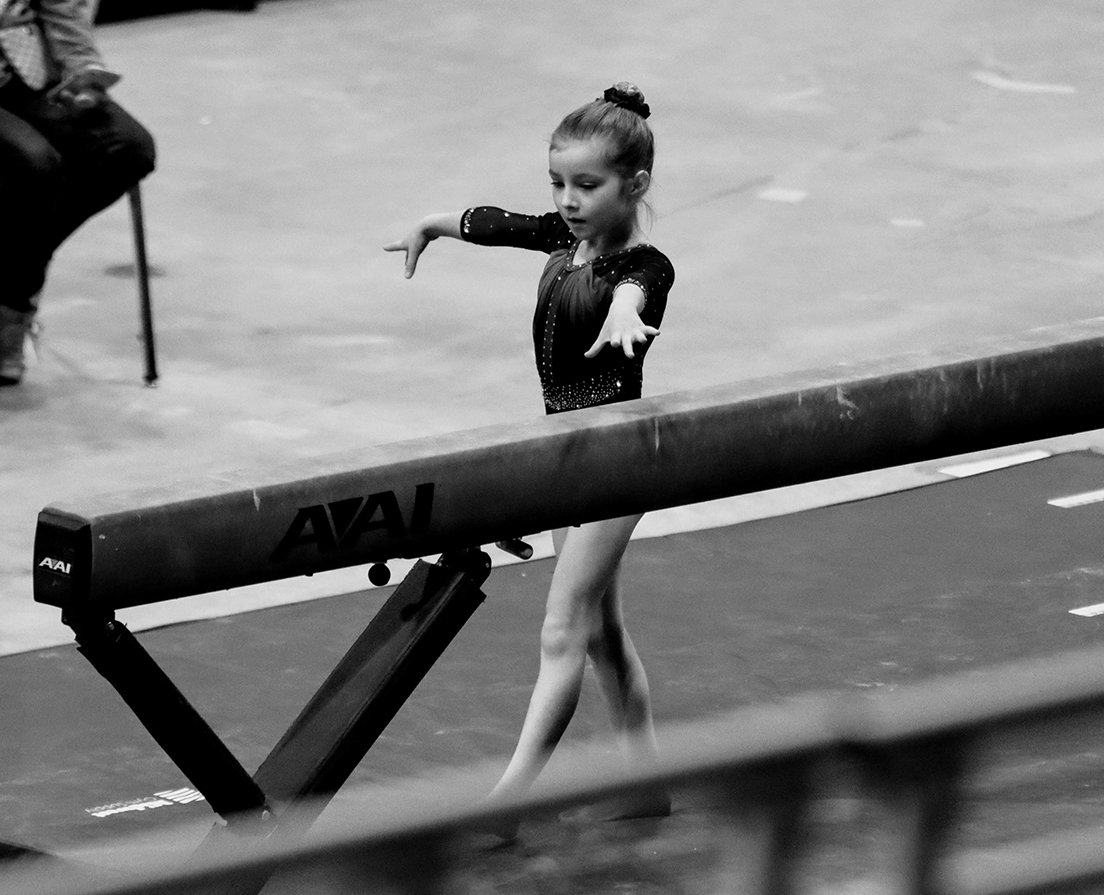July 12, 2021
Takes One to Know One
Dr. Blatnik Talks Gymnastics
Terra Blatnik, MD – pediatric, adolescent and sports-medicine orthopedic specialist – knows gymnastics. As a doctor, former gymnast, and now mom of a gymnast, Dr. Blatnik is an expert on conditioning, injury prevention and injury treatment in these spectacular athletes. As the world preps for the 2021 Summer Olympics on Tokyo, Japan, Dr. Blatnik shares her insights.
 Gymnast, Doctor, Mom
Gymnast, Doctor, Mom
Gymnastics is a sport that has always been very important to me.
I started gymnastics when I was young, and participated in competitive gymnastics through early high school. Some of my best memories come from my time at gymnastics as a kid—from practice with my friends, to time spent with my mom traveling to meets. As I got older and moved on to medical school and additional medical training, I transitioned to the sidelines to help take care of gymnasts. Now, I continue to take care of gymnasts in my office, but am also the proud parent of a gymnast, and you can often find me in the stands cheering on her and her teammates. All of this experience has given me a unique perspective on this amazing sport.
Photo (right): Dr. Blatnik’s daughter at a 2021 gymnastics meet
Common Injuries
Gymnasts are very well-rounded athletes who require strength in all areas of the body. From strong arms to a phenomenal core, these women and men ask a lot of their bodies. Injuries in gymnasts, like all athletes, can be divided into acute (from a specific injury) and chronic (developing over time from too much activity).
In terms of acute injuries, female gymnasts tend to get injuries involving the lower body—typically sprains and strains of the ankle and knee. At the Olympic trials, Emily Lee landed her first tumbling pass awkwardly rolling her ankle. This is a common way an injury will happen—funny landings from tumbling or dismounts.
Male gymnasts tend to be injured more in their upper body. If you have ever seen Sam Mikulak participate on the rings or the pommel horse you will realize why this happens! The stress these athletes put on their arms during their events leads to a lot of wrist and shoulder injuries.
Chronic Injuries
Chronic injuries are also very common because of the long hours gymnasts spend training. Even young gymnasts can spend more than 10 hours per week in the gym. Both male and female gymnasts are at risk for low-back pain from muscular strain or stress fractures. Stress fractures happen because of how much gymnasts arch their backs in tricks like back handsprings and back walkovers. Chronic wrist pain is also a common complaint of both genders. Think of how much time gymnasts spend balancing on their hands; wrists are not meant to hold our body weight, so over time, injuries can occur.
Preventing Injury
There are some preventive measures gymnasts can take to make it less likely that they will sustain an injury. All gymnasts know that conditioning is a huge part of their training (often their least favorite part!), but it is important for developing a strong back and core to prevent back pain and chronic injury. Special wrist braces are worn by many gymnasts (take a look at some of our U.S. gymnasts on floor and vault) to help prevent wrist pain by limiting motion. As in many sports, preventing an anterior cruciate ligament (ACL) injury is also really important. Practicing landing technique and working on core and lower-body strength through a very specific set of exercises (FIFA 11+ for example) can lower a gymnast’s risk of ACL tears significantly.
Let the Games Begin
Despite the physical demands of gymnastics, it is a beautiful and fun sport to watch. Simone Biles in particular has been pushing the boundaries of what we thought possible in gymnastics. The Olympics are going to be amazing to watch from both the women’s and men’s side. I can’t wait to sit with my daughter and marvel over what these athletes are able to do.
Are You a Gymnast?
Dr. Blatnik sees patients at the Young Athlete Center, at St. Louis Children’s Specialty Care Center and at St. Louis Children’s Hospital. If you or someone you know would like information on injury prevention, or would like to speak with Dr. Blatnik or one of our other sports medicine specialists, call or visit our website: